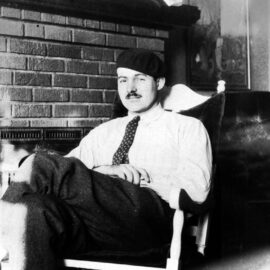

This article is an excerpt from the Shortform book guide to "Mediocre" by Ijeoma Oluo. Shortform has the world's best summaries and analyses of books you should be reading.
Like this article? Sign up for a free trial here.
Why do some people regard certain groups as criminals or terrorists? Why is Alexandria Ocasio-Cortez criticized?
In Mediocre, Ijeoma Oluo provides an eye-opening exploration of white male supremacy in the United States. She discusses the mythology of violence, examines the monopoly on power, and uncovers the tactics used to maintain dominance.
Read more to get Oluo’s take on the dynamics of white male supremacy.
White Male Supremacy
Oluo writes that the underlying cause of white male mediocrity is white male supremacy. She describes how white male supremacy came to be a dominant force in US society. This dominance is characterized by an emphasis on violence and a monopoly on political and economic power.
| Defining Terms: “White Male Supremacy” “White supremacy” is a heavily charged term: As Oluo acknowledges, it can conjure images of overt hate groups like the Ku Klux Klan. It’s also often used in contemporary political discourse to refer to a strand of nationalistic anti-immigration rhetoric that began to gain traction in US and European politics in the mid-2010s. Much of what Oluo describes as “white male supremacy” is much subtler than these extreme examples—but part of her point is that subtler forms of racism and sexism can be just as damaging as their more explicit counterparts. Therefore, we use the term “white male supremacy” as Oluo does—to refer to the often implicit foregrounding of white male interests in historical and contemporary US culture. This usage reflects the way, for example, historians use “white supremacy” to describe how textbooks of the past emphasized white achievement while ignoring Black history and glossing over slavery. In this context, the term doesn’t describe racial hatred so much as it describes an underlying belief that the US is fundamentally a country for white people (most often, white men). |
A Mythology of Violence
According to Oluo, white American male culture is exemplified by the image of the cowboy—the rugged, violent conqueror who defends his independence at all costs and stands alone as the civilizer of the West. She argues that many white men, wanting to see themselves as heroes, take on the cowboy persona, which in turn causes them to look for enemies to justify their adopted sense of vigilance and aggression. She suggests that this persona explains why some white men are quick to see their Black fellow citizens as criminals or their Muslim fellow citizens as terrorists—sometimes with deadly consequences.
Oluo says that this cowboy persona is based on a myth contrived to gloss over the deliberate genocide of native peoples by casting the victims as brutal savages and the perpetrators as defenders of civilization. She gives the example of Buffalo Bill Cody, a 19th- and early 20th-century showman, hunter, and soldier. Cody initially came to prominence for his skill at massacring buffalo—a practice employed to starve the Indigenous American population who relied on them for food. He later gained widespread fame and success by creating an Old West stage show that celebrated his buffalo hunts and glorified incidents such as his killing and scalping of a young Cheyenne warrior.
Despite the US’s legacy of expansionist violence, Oluo argues, the cowboy persona is still especially prevalent in the modern-day American West, where it’s evolved into a variety of religious extremist, militia, and anti-government movements that emphasize white male sovereignty. She illustrates this contemporary extremism by pointing to the Bundys, a ranching family who staged several armed standoffs with the US government over their alleged right to graze their cattle on public lands without paying fees or respecting rules.
A Monopoly on Power
Oluo says that, in addition to claiming power by force, white male supremacy guards its power by excluding anyone other than white men from political and economic institutions. Oluo argues that this exclusion comes not necessarily from prejudice against other groups, but rather from a desire to keep white men at the center of society by eliminating competitors. For that reason, she says, when women—especially women of color—make headway in male-dominated institutions, the white male establishment meets them with ridicule and blame, accuses them of narrow self-interest, and may subject them to outright abuse and threats.
Tactic #1: Ridicule & Blame
According to Oluo, when women achieve (or seek) power in politics or the workplace, white men often respond by refusing to take these women seriously. For instance, Oluo gives the example of Congress member Shirley Chisholm, who in 1972 became the first Black candidate (and one of the first women) to run for a major party’s Presidential nomination. Oluo says that although Chisholm was an accomplished politician, some of the press dismissed her as a distraction from serious (male) politics and critiqued her appearance and dress. Oluo argues that these basic tactics persist today, when female politicians of color such as Alexandria Ocasio-Cortez are criticized for their appearance, youth, speech, and supposed political naïveté.
Similarly, Oluo says, women who break into male-dominated spheres like politics and business often become scapegoats. For example, during the Great Depression, some observers blamed record unemployment on an increased number of women in the workforce, implying that women had supplanted male workers—even though most of these women held “female” jobs like teaching and housekeeping.
According to Oluo, this tendency to blame women continues today: She says that frequently, when companies appoint women as CEOs, they often do so only out of desperation when the company is already foundering. And when the companies’ woes continue or worsen, the business world blames the female executives who, in reality, were set up to fail.
Tactic #2: Accusations of Narrow Self-Interest
Furthermore, Oluo claims that white male society guards its power by claiming that women and people of color are only interested in representing their own demographic groups and aren’t capable of looking out for the majority (meaning white men). For example, she explains that Chisholm built her presidential campaign on a platform of popular, mainstream progressive stances—yet she was dismissed as a candidate only for Black and/or female voters. Oluo says that a similar trend occurs in the business world when non-white, non-male executives are hired in part to make companies more diverse and inclusive—only to be vilified for their attempts to change company culture.
Tactic #3: Abuse & Threats
One final way Oluo says white male supremacy guards its position is by verbally abusing and threatening women and people of color who seek power. For example, Oluo relates that early in Chisholm’s campaign, a staffer going through airport security had a bundle of campaign flyers handed back with a racial slur written across them along with the admonition to “go home.” Sometimes, this kind of hate speech turns into intimations or threats of violence. For instance, Oluo cites an email sent to US Representative Rashida Tlaib (who is Muslim) celebrating a recent act of anti-Islamic terror and calling for more such attacks.

———End of Preview———
Like what you just read? Read the rest of the world's best book summary and analysis of Ijeoma Oluo's "Mediocre" at Shortform.
Here's what you'll find in our full Mediocre summary:
- Why underqualified white men are in powerful positions
- How toxic white men have reacted to social progress
- The presence of white supremacy in American football






